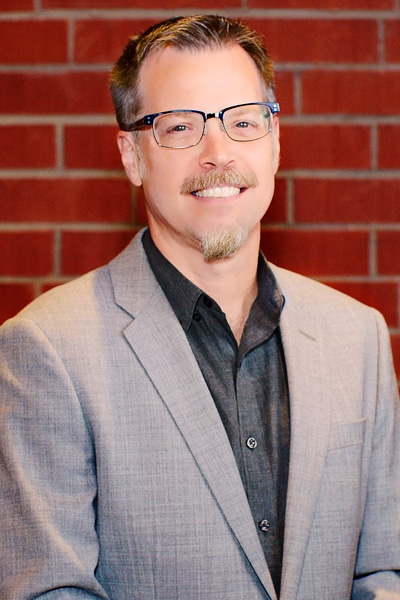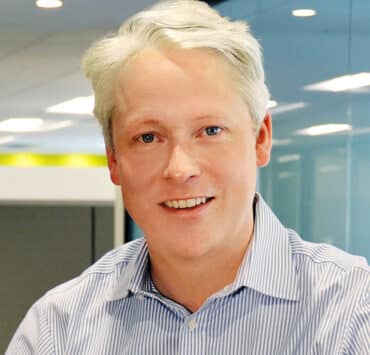|
Getting your Trinity Audio player ready...
|
In his first two years attending evening law school, Stephen Tytran led a secret double life. By day, he was an advisory engineer for the IBM Corporation. By night, he was earning his juris doctorate from the North Carolina Central University School of Law.

“I debated whether or not I should tell my employer, just because it was such a different field,” Tytran says. At that point, he had been an engineer for over a decade. “I did tell a couple of close friends on my engineering team. If we were in one of those crunch periods where a product had to go out the door, I’d say, ‘Look, if I disappear for a little while, it’s because I’m doing this little thing called law school on the side. If you can cover for me, I promise I’ll make up the time to get the work done.’”
Tytran did ultimately come clean about law school with his engineering management, who then allowed him time during the week to get patent training from the IP team at IBM while keeping his engineering position. Eventually, the dual position evolved into a full-time patent agent role on the IP team, enabling Tytran to support his former engineering team until graduating from NCCU as valedictorian in 2000.
Compared to the path most lawyers take, Tytran’s was an unconventional one. After his time writing and prosecuting patent applications at IBM and a large patent boutique law firm, Tytran worked at a patent assertion entity, Scenera Research, for nearly fifteen years before coming to Citrix, where he currently serves as director and senior associate general counsel of intellectual property. Given Citrix’s status as a multinational software company, the scope of Tytran’s work has grown significantly since those early days.
“When my legal career first started, I was focused on getting patents for clients—essentially writing patent applications for individuals and corporations,” Tytran says. “Now, my universe has expanded from that. I handle all types of intellectual property matters: not just developing patent portfolios but licensing patented technology into and outside the company and defending against and asserting patent rights through litigation. I work with strategic partners to protect the respective IP on both sides of a transaction. That can include patents, but it can also include copyright, trademark, and trade secret.”
This latest role has been a welcome shift for Tytran. He remembers how, at a certain point in his career, writing patent applications no longer felt new—which is why he eventually gravitated toward a position with a different set of challenges. Citrix also offered a novel experience in that Tytran had never worked at a company that delivered SaaS (Software as a Service) products.
“You don’t buy a box with it,” he says. “We install our software on someone else’s or our own infrastructure in the cloud and deliver it as a service. The arrangement presents an entirely different perspective as to how that relationship should be legally governed.”
Tytran explains that while one doesn’t need a technical degree in a field such as engineering to be a successful lawyer at a technology company, it is critically important to have in-depth technical knowledge of your products when you’re an IP lawyer. “If you don’t have a firm understanding of what your product is and how it technically functions, it’s very difficult to draw the metes and bounds of the IP rights needed to protect that product,” he says. “For example, where does the boundary lie between the functionality of your proprietary software and your public-facing APIs? If you can’t draw those distinctions clearly, you’re not going to be an effective advocate.”
Grant Moss, founder and president of Adapt IP, has worked closely with Tytran on numerous IP management projects. “Stephen sees value in IP opportunities that can either be difficult to identify or challenging to manage,” Moss says. “He credits the ability to execute value-creating strategies to his background of managing IP projects from multiple vantage points.”
According to Tytran, engineering and practicing law can also overlap in the mindset required by each field. For instance, they both require him to solve complex problems. There are some notable distinctions between the two practices, though.
“Where they tend to differ is that, in engineering, you’re usually dealing with a physical law or natural law,” Tytran says. “There’s a formula out there, and that’s the answer. At least until we figure out that it’s not the answer. But for the most part, the solutions in engineering end up being pretty fixed and clear. With the law, that’s almost never the case. There’s almost never an answer because it’s all related to circumstance.”
During his first year in law school, Tytran developed an approach that helped him to start thinking as a lawyer. When researching a case, he would come up with what he calls the “engineer answer”—i.e., a solution that was straightforward, streamlined, and driven solely by facts rather than interpretation.
But then he would consider the opposite answer and consider how that could also result from those same facts and circumstances. He even applied the approach to essays in law school, writing out both arguments, then finally concluding which one made the most sense. While this mindset is more or less second nature to him now, he still puts it to good use on a daily basis at Citrix.
“You just need to be more flexible in your thoughts and approach as a lawyer than you do as an engineer,” Tytran says.

